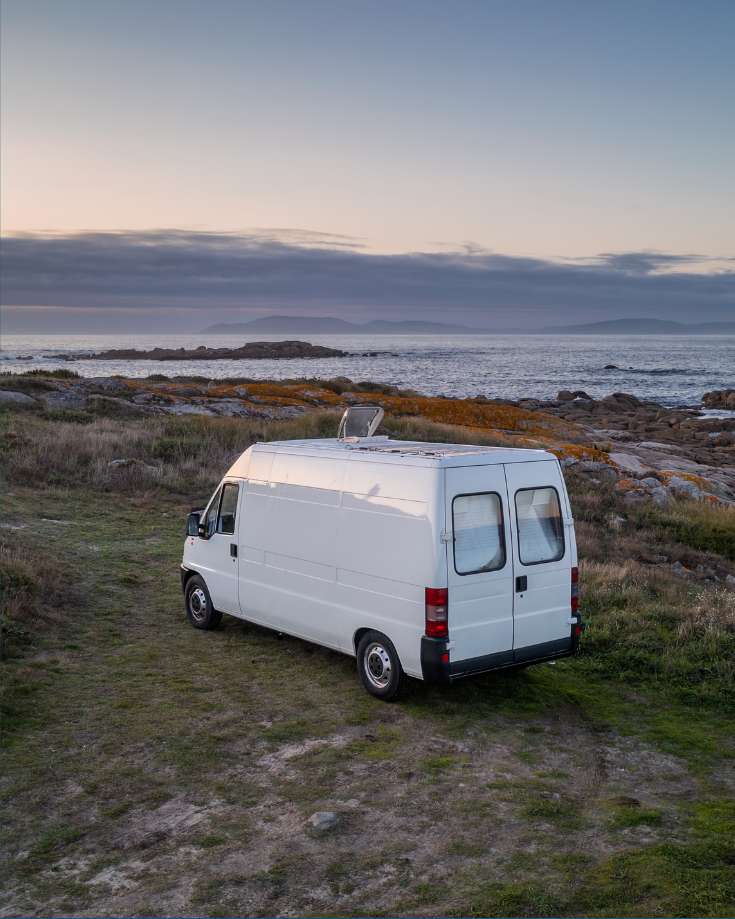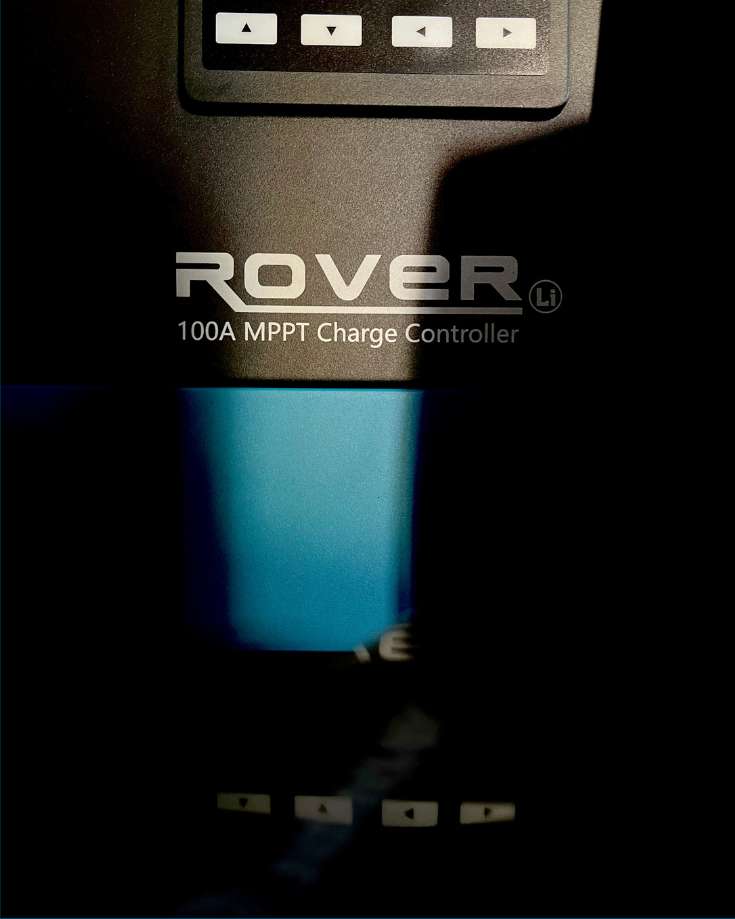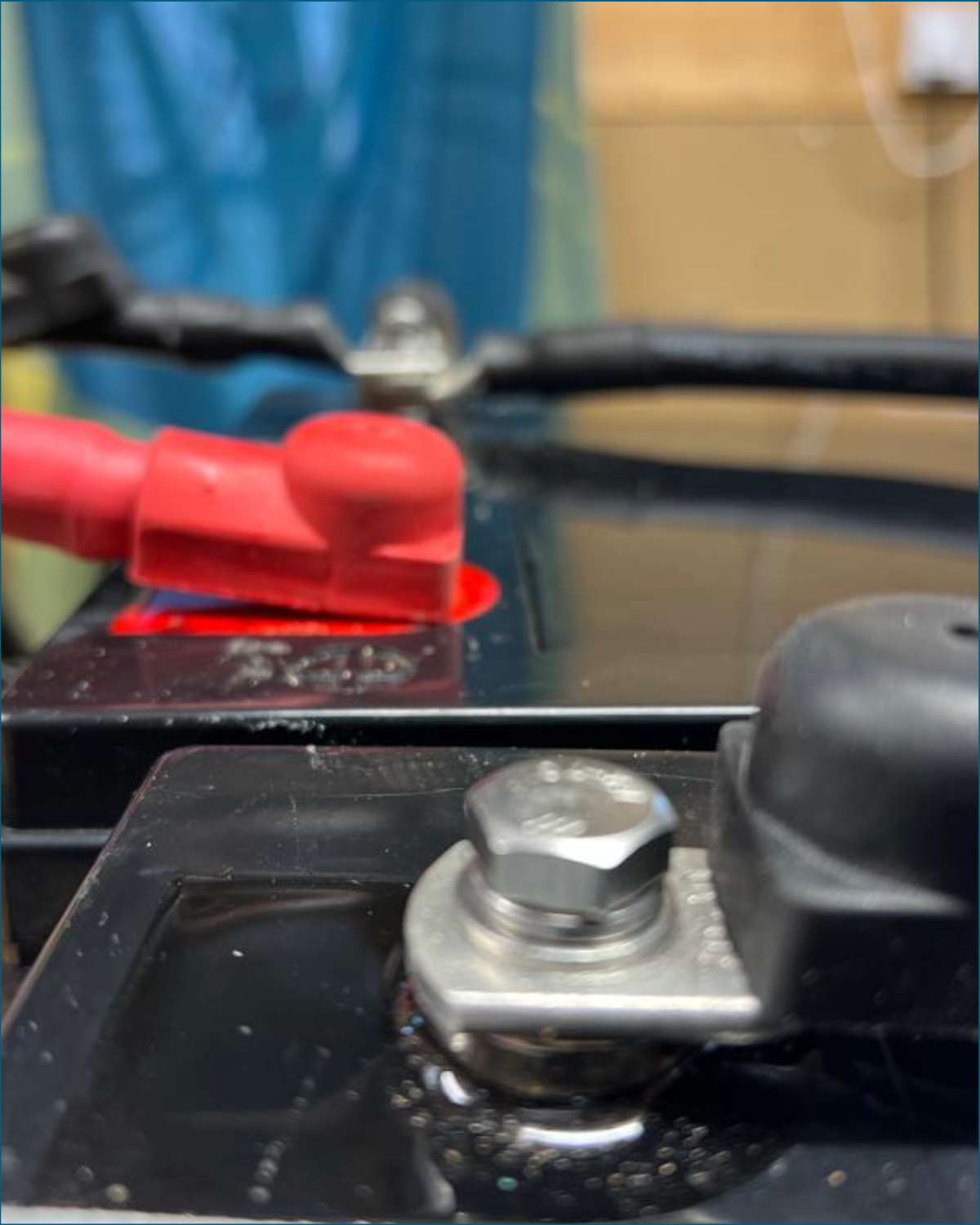We’ve reviewed the best MPPT solar charge controller options for your RV, campers, & motorhomes!
Are you looking to optimize your solar power system and get the most out of your solar panels? Look no further than MPPT solar charge controllers!
These devices can significantly boost the efficiency and performance of your solar energy system.
MPPT solar charge controllers are the best type of battery chargers you can get. They are very efficient and can give you 30% more power than other types of chargers.
They are compatible with various battery types and voltages, making them ideal for optimizing your solar power system.
In this blog post, we’ll discuss:
- the advantages of using MPPT solar charge controllers,
- compare them to other types of controllers, and introduce the top models available on the market.
You’ll also learn how to choose the right MPPT solar charge controller for your needs and get tips on installation and maintenance.
So let’s dive in and harness the sun’s power to its fullest potential!
When you click on links to various merchants on this site and make a purchase, this can result in this site earning a commission. As Amazon Associates, we earn from qualifying purchases. For more info, please check our disclosure page.
At a Glance: Top 3 Best MPPT Solar Charge Controller Options For RV Campers
 |
1. Renogy Rover Li 40a MPPT Charge Controller
|
CHECK PRICE ► |
 |
2. Victron Energy SmartSolar 100/30 MPPT Charge Controller
|
CHECK PRICE ► |
 |
3. ePever 60A MPPT Controller
|
CHECK PRICE ► |
Understanding MPPT Solar Charge Controllers
MPPT solar charge controllers are the most efficient devices for controlling the charge that goes into your battery, ensuring that it receives the maximum power possible from your solar panels.
There are two main types of solar charge controllers:
- pulse width modulation (PWM), and
- maximum power point tracking (MPPT) charge controller.
Modern solar charge controllers have advanced features that optimize battery charging.
When comparing MPPT and PWM charge controllers, MPPT controllers modulate both voltage and current, whereas PWM controllers only affect current.
As a result, MPPT controllers are more efficient, and we recommend them for all RV solar panels, no matter how big or small.
Role of Solar Charge Controllers
Solar charge controllers play a crucial role in regulating the flow of electricity from solar panels to batteries.
They prevent overcharging and maximize efficiency by tracking the point at which solar panels produce the most power.
It’s essential to select a charge controller with the appropriately rated input and output currents, as these values determine the maximum current (in amps) that the controller can charge the battery at and the amount of current it can accept from the solar panels.
If the voltage of the solar array goes above the maximum input voltage of the solar charge controller, it could cause the unit to malfunction.
Therefore, it’s important to ensure the controller’s rated input and output current AND its input voltage are appropriate for your solar power system.
MPPT vs PWM Charge Controllers
As mentioned earlier, there are two main types of solar charge controllers: MPPT and PWM.
MPPT controllers offer several advantages over their PWM counterparts.
The most significant difference between the two is that MPPT controllers have the ability to modulate both voltage and current, while PWM controllers only affect current.
This results in higher efficiency and better performance for MPPT controllers.
Key Features of MPPT Solar Charge Controllers
The key features of MPPT solar charge controllers include:
- maximum power point tracking,
- increased efficiency, and
- compatibility with various battery voltages.
These features make MPPT controllers ideal for optimizing your RV solar power system.
In the following subsections, we’ll delve deeper into each of these features and explain their significance.
Maximum Power Point Tracking
Maximum power point tracking (MPPT) is the process of finding the most efficient point at which a solar system operates.
The perfect voltage and amperage combination for a solar power system is influenced by various factors such as:
- the angle of the sun hitting the panels,
- cloud cover,
- rain, and
- temperature.
The max power point is the balance of voltage and amperage that produces the most power from the solar panel, minimizing the amount of energy lost when converting and transferring it through the system.
MPPT solar charge controllers continuously track the maximum power point, ensuring that the solar panel operates at its peak power point, which is the optimum voltage and current for the highest power output.
This process can provide efficiency gains of up to 30% compared to non-MPPT controllers.
By optimizing the voltage match between the solar panels and the batteries, MPPT controllers can significantly increase the charging efficiency and power output of the solar system.
Efficiency Gains
One of the main advantages of using MPPT solar charge controllers is their ability to improve the efficiency of your solar power system.
The efficiency gains offered by MPPT controllers can be especially beneficial for off-grid solar power systems, where maximizing power output is crucial.
By optimizing the solar panel’s voltage and current, MPPT controllers can ensure that your solar power system operates at peak performance, providing the maximum power output possible.
Compatibility with Different Battery Voltages
Another essential feature of MPPT solar charge controllers is their compatibility with various battery types and voltages.
MPPT controllers are designed to work with a wide range of battery types, including sealed, AGM, gel, flooded, and lithium.
This makes them suitable for use in a variety of solar power systems and ensures that you can choose the best battery type for your specific needs.
Additionally, MPPT controllers can work with both 12V and 24V battery systems, making them versatile and adaptable to different solar power configurations.
Some models can even support 36v and 48v battery systems.
By selecting an MPPT solar charge controller that is compatible with your battery type and voltage, you can ensure optimal performance and efficiency in your solar power system.
Best MPPT Solar Charge Controllers on the Market
When it comes to top MPPT solar charge controllers on the market, the Renogy Rover Series, the Victron SmartSolar Series, and the Epever Tracer Series are all excellent options.
Each of these models offers a unique set of features and advantages that cater to a wide range of solar power system requirements.
In the following subsections, we’ll take a closer look at each of these top MPPT solar charge controllers and discuss their features, benefits, and potential drawbacks.
1. Renogy Rover Series

Renogy is a leading brand in the solar industry, offering a wide range of products to help RVers and other outdoor enthusiasts power their adventures.
The Rover Li MPPT controllers are part of the company’s line of charge controllers designed for use with RVs, cars, and trucks.
These controllers feature Maximum Power Point Tracking (MPPT) technology that helps maximize solar energy conversion efficiency.
They come in five models – 20A, 30A, 40A, 60A, and 100A – all with die-cast aluminum shells that provide superior heat dissipation.
Overview
The Renogy Rover Li MPPT controllers feature an LCD screen and multiple LED indicators to monitor your system’s performance easily.
They also have Bluetooth capabilities for remote monitoring and precise control over your system’s settings.
The 20A, 30A, and 40A models are suitable for 12V or 24V DC systems, while the 60A and 100A models are compatible with 12V, 24V, 36V and 48V systems. All three models come with a 3-year warranty from Renogy.
Pros
- Maximum Power Point Tracking (MPPT) technology helps maximize efficiency
- LCD screen and multiple LED indicators make it easy to monitor performance
- Bluetooth capabilities allow for remote monitoring and precise control over settings
- Die-cast aluminum shells provide superior heat dissipation
- 2-year warranty from Renogy
- Affordable without scrimping on quality
Cons
- The 100A model is a large piece of kit
Overall, the Renogy Rover Li MPPT Controllers offer excellent features at a competitive price point.
Their advanced digital power technology ensures maximum efficiency when converting solar energy into usable electricity, while their die-cast aluminum shells provide superior heat dissipation.
With Bluetooth capabilities for remote monitoring and precise control over settings, these controllers are perfect for RVers looking to get the most out of their solar setup.
2. Victron SmartSolar Series

The Victron SmartSolar Series is a top-of-the-line MPPT solar charge controller range that offers a versatile and compact design, integrated intelligent load output for battery protection, and built-in Bluetooth connectivity for easy remote management.
The Victron SmartSolar MPPT charge controller can charge even severely depleted batteries and can work with a severely depleted battery, making it an impressive and reliable choice for solar power systems.
One of the standout features of the Victron SmartSolar Series is its built-in Bluetooth connectivity, which eliminates the need for purchasing a separate Bluetooth module.
This feature allows for easy monitoring and customization of your solar power system through the user-friendly VictronConnect app.
The app can create and save custom charging profiles, provide system information, and even remotely manage your MPPT controller.
Overview
The Victron SmartSolar series offers a wide range of MPPT solar charge controllers that are reliable, efficient, and easy to use.
They feature Bluetooth connectivity for monitoring your system from anywhere in the world and advanced features such as temperature compensation and adjustable charging parameters.
The range also includes models with up to 100 amp charge current, making them suitable for larger systems.
Pros
- Built for industrial use so reliable and efficient performance
- Easy to use with Bluetooth connectivity
- Models with up to 100 amp output available
- Advanced features such as temperature compensation and adjustable charging parameters
- Ability to recharge severely depleted batteries
Cons
- Higher price point than some competitors
- Limited availability in some areas
- Once you start down the Victron route for your RVs electrical components, you must use Victron throughout to leverage their full features and capabilities.
Overall, the Victron SmartSolar series is an excellent choice for RVers looking for reliable, efficient power solutions.
It offers a wide range of features and is built to last, making it one of the most popular options on the market today.
Compared to other brands such as Renogy or EPever, the Victron SmartSolar series provides superior build quality but at a far higher price point.
Although we recommend this product to anyone looking for reliable power solutions while on the road, we also think the cost and build quality are overkill for use in our RV campers.
3. EPever Tracer Series

The Epever Tracer Series is a range of MPPT (Maximum Power Point Tracking) solar charge controllers designed to provide reliable and efficient power for RVers.
The series includes models ranging from 10A to 100A, and are compatible with 12V/24V/36V/48V lead-acid and lithium batteries.
Developed by EPEVER, a leading manufacturer in the solar industry, the Tracer Series is designed to be easy to install and use, while providing superior performance and reliability.
Overview
EPEVER is a global leader in solar energy solutions, offering products such as inverters, charge controllers, monitoring systems, and more.
The Tracer Series is their flagship line of MPPT charge controllers that offer advanced features such as:
- multiphase synchronous rectification technology (MPSRT),
- maximum power point tracking (MPPT) technology,
- temperature compensation functions, and
- more.
The Tracer Series can accommodate even the largest RV solar system with its wide range of models available.
Pros
- Budget-friendly & does the job
- Easy to install and use
- Superior performance with MPSRT technology
- Maximum power point tracking (MPPT) technology for optimal charging efficiency
- Temperature compensation functions for improved battery life
- Wide range of models available up to 5KW solar panel systems
Cons
- Not all models are compatible with lithium batteries
Overall, the Epever Tracer Series offers an excellent choice for RVers looking for reliable and efficient power solutions.
Its advanced features make it one of the most powerful MPPT charge controllers on the market today.
It’s budget-friendly, so an ideal entry model.
Choosing the Right MPPT Solar Charge Controller
When choosing the right MPPT solar charge controller for your solar power system, there are several factors to consider.
These include the:
- system size and power requirements,
- battery type compatibility, and
- additional features such as voltage regulation and overcharge protection.
We’ll discuss each of these factors in more detail here and provide guidance on how to make the best choice for your specific needs.

System Size & Power Requirements
Determining the appropriate system size and power requirements for an MPPT solar charge controller ensures optimal performance and efficiency.
The charge controller’s size depends on the solar array’s total watts, how much voltage and current it can produce, and the battery bank’s voltage.
This information will help you determine the appropriate size and capacity of the MPPT solar charge controller, ensuring that it can effectively manage the energy produced by your solar panels and maintain optimal performance.
Battery Type Compatibility
Battery type compatibility is another essential factor to consider when choosing an MPPT solar charge controller.
MPPT controllers are designed to work with various battery types, including sealed, AGM, gel, flooded, and lithium.
Ensuring that your chosen MPPT controller is compatible with your battery type is crucial.
Some MPPT solar charge controllers offer custom charging profiles, which allow users to create their own battery profiles and set the voltage set points (float voltage and absorption voltage).
This feature can be particularly beneficial for users with unique battery requirements or those looking to optimize their battery’s lifespan by adjusting the voltage set points based on specific needs.

Additional Features
There are several additional features to consider when choosing an MPPT solar charge controller.
Voltage regulation, or overcharge protection, is a key feature that ensures the output of the PV module is converted to the optimal voltage to get the most current into the battery.
This feature is essential for maintaining the health and lifespan of your batteries and preventing damage due to overcharging.
Some MPPT controllers also provide power to a DC load, allowing you to connect devices directly to the controller for power.
When choosing an MPPT solar charge controller, be sure to consider these additional features and how they can benefit your solar power system.
Installation & Configuration Tips
Once you’ve chosen the right MPPT solar charge controller for your solar power system, it’s essential to ensure proper installation and configuration to optimize performance and efficiency.
Here are some tips on solar panel voltage and temperature considerations and proper sizing and wiring techniques to help you get the most out of your MPPT solar charge controller.
Connect the Charge Controller to the Battery First
Connecting an MPPT solar charge controller to the battery before the solar panels is essential for optimal performance.
This sets the controller’s output voltage to charge the RV battery bank appropriately.
Also, once the panels are connected, the power has somewhere to pass through.
It’s important to note that connecting the panels before the batteries can result in a damaged controller for some solar charge controllers.
Connecting the battery first ensures that your system runs at its most efficient level and that your controller remains safe from damage during setup.

Proper Sizing & Wiring
Proper sizing and wiring of your MPPT solar charge controller are essential for optimal performance and efficiency.
When wiring your MPPT solar charge controller, using appropriate wire sizes and connections is important to minimize voltage drop and ensure a safe connection.
By ensuring proper sizing and wiring, you can optimize the performance and efficiency of your MPPT solar charge controller and prolong the lifespan of your solar power system components.
Maintaining & Troubleshooting MPPT Solar Charge Controllers
Regular maintenance and troubleshooting are essential for ensuring the continued performance and efficiency of your MPPT solar charge controllers.
In the following subsections, we’ll discuss the regular maintenance tasks required for MPPT solar charge controllers and common problems and solutions to help you keep your solar power system running smoothly.
Regular Maintenance Tasks
To maintain the performance and efficiency of your MPPT solar charge controller, it’s important to perform regular maintenance tasks.
These tasks include checking the wire connections, measuring the battery voltage, and cleaning the controller every three months.
Additionally, we recommend regularly visually inspecting the entire system.
Proper maintenance of your MPPT solar charge controller also involves checking the wire terminals and ensuring they are secure and corrosion-free.
Using pin connectors can help prevent the terminals from becoming loose over time, while using thick wires can help minimize voltage drop.
By performing these regular maintenance tasks, you can prolong the lifespan of your MPPT solar charge controller and ensure your solar power system’s continued efficiency and performance.

Common Problems & Solutions
Common problems encountered with MPPT solar charge controllers include voltage drops and incorrect settings, which can impact the performance and efficiency of your solar power system.
To troubleshoot these issues, it’s important to check all the wires, connections, and fuses to ensure a secure and reliable connection.
Additionally, ensure the solar panels aren’t blocked by the shadow of any other components on your RV’s roof. Roof vents, satellite dishes, and antennas commonly cast shadows on the panels.
Depending on how they’re wired, that could be enough to cause a significant drop in their efficiency.
If you continue to experience issues with your MPPT solar charge controller, double-check the design parameters and ensure that the correct battery type is selected.
In some cases, adjusting the voltage setpoints or utilizing temperature compensation features can help improve the performance and efficiency of your solar power system.
By addressing these common problems and implementing the appropriate solutions, you can optimize the performance of your MPPT solar charge controller and ensure the continued success of your solar power system.
In Conclusion
In summary, MPPT solar charge controllers offer significant advantages in terms of efficiency, performance, and compatibility with various battery types and voltages.
We recommend the Renogy Rover Li series for reliable and efficient solar charging at a sensible price.
When selecting an MPPT controller, consider additional features such as load control and temperature compensation to maximize performance.
Proper installation and configuration of your MPPT solar charge controllers are essential for maintaining their efficiency and
By understanding the differences between MPPT and PWM charge controllers, choosing the right model for your specific needs, and properly installing and maintaining your controller, you can maximize the potential of your solar power system.
With the right MPPT solar charge controller in place, you can harness the sun’s full power, reduce your energy costs, and contribute to a more sustainable future.
Frequently Asked Questions
What is an MPPT solar charge controller?
An MPPT solar charge controller is essential to any solar power system. It efficiently converts the direct current generated from the solar panels into a charging level appropriate for your battery. In short, it helps you get the most out of your solar panel system.
MPPT controllers are designed to maximize the power output of your solar panel system. They do this by tracking the maximum power point of the solar panel and adjusting the output.
What is the disadvantage of MPPT?
The major disadvantage of MPPT charge controllers is their cost; they are usually more expensive than PWM controllers. Additionally, they require specialized and accurate sensors, such as voltage and/or current sensors, for proper operation.
They also tend to be larger, making them more difficult to handle and mount.
What does MPPT do when the battery is full?
MPPT controllers detect when a battery is full and automatically switch from charging mode to float/maintenance mode, which keeps the battery at its optimum charge.
The maximum charging voltage then drops to around 13.5v, and if you have a voltmeter connected to the 12v battery, you’ll see this happen.
This is a great way to ensure that your battery is always at its best and that you don’t overcharge it.
It also helps to extend the battery’s life and keep it in good condition.
What is better, PWM or MPPT?
An MPPT is a better choice than PWM regarding the charge controller. MPPT offers a much higher efficiency of up to 30%, and also ensures the correct matching of the panel voltage and battery voltage.
So if you’re looking for an efficient and reliable charge control device, MPPT is your best bet.
Graham Bogie

Graham is a seasoned marine electrical engineer with two decades of experience designing customized electrical systems for plant machinery and converting campers and overland vehicles. His expertise has led him to author the reputable Campervan Electrics Handbook and become the chief designer of the RV Wiring Design Tool. As a knowledgeable figure in the field, his YouTube channel, blog, Facebook group, and newsletter, offering electrical advice and product reviews, reach more than a million users each year.



